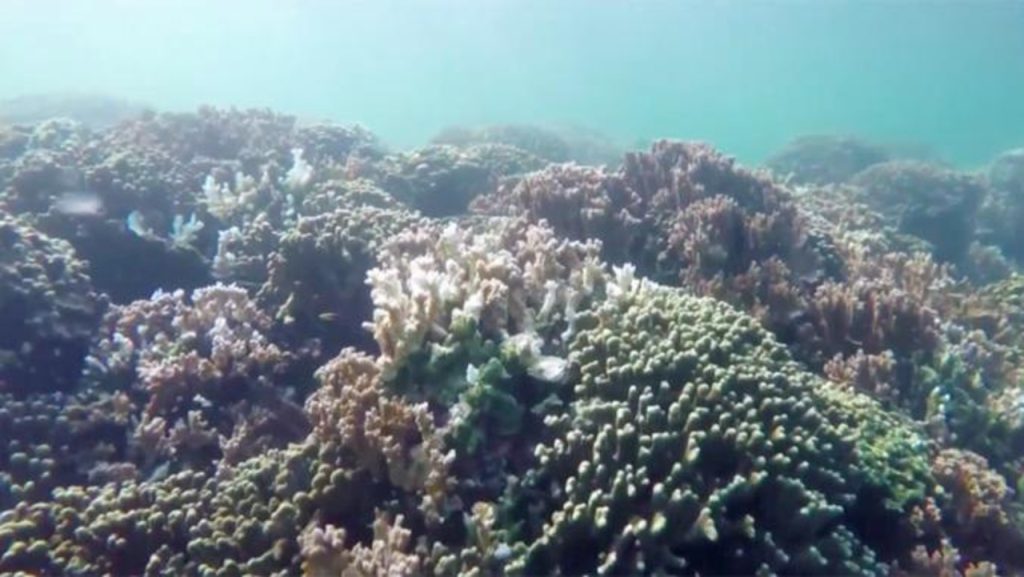 Courtesy: UH Mānoa
Courtesy: UH Mānoa
A new study, led by oceanographers at the University of Hawai‘i at Mānoa, has revealed that unprecedented levels of ocean acidification are expected around the main Hawaiian Islands within the next three decades.
Acidification is a process in which carbon dioxide from the atmosphere dissolves into the ocean, changing its chemistry in a way that can impact and threaten coral reefs and other marine life.
Increased ocean acidification has the potential to harm marine life by weakening the shells and skeletons of organisms such as corals and clams, amplifying the effects of existing stressors, and threatening ocean-based ecosystems.
ARTICLE CONTINUES BELOW AD
However, researchers have hope, as some organisms have shown signs of adapting to the changing waters.
Researchers within the laboratory group of Brian Powell, professor in the Department of Oceanography at the UH Mānoa School of Ocean and Earth Science and Technology, used advanced, fine-scale computer models to project how ocean chemistry around the main Hawaiian Islands might change over the 21st century under different climate scenarios based on how much carbon dioxide societies continue to emit.
“We found that ocean acidification is projected to increase significantly in the surface waters around the main Hawaiian Islands, even if carbon emissions flatline by mid-century in the low emission scenario,” said Lucia Hošeková, lead author of the paper and research scientist at the college. “In all nearshore areas these increases will be unprecedented compared to what reef organisms have experienced in many thousands of years.”
ARTICLE CONTINUES BELOW AD
To better understand the impact, the team looked at how different future ocean conditions would be compared to the past. They called this difference “novelty.”
ARTICLE CONTINUES BELOW ADARTICLE CONTINUES BELOW AD
Areas with higher novelty are expected to experience more dramatic changes in ocean chemistry. The study found that windward coastlines consistently exhibited higher novelty—meaning future conditions are projected to deviate more dramatically from what coral reefs have historically experienced.
“We did not expect future levels of ocean acidification to be so far outside the envelope of natural variations in ocean chemistry that an ecosystem is used to,” said Tobias Friedrich, study co-author and research scientist in the Department of Oceanography. “This is the first ocean acidification projection specifically for Hawaiian waters to document that.”
Corals potential to adapt
ARTICLE CONTINUES BELOW AD
Previous studies have shown that a coral that is exposed to slightly elevated ocean acidity can acclimatize to those conditions, thereby enhancing the coral’s adaptability.
“The results show the potential conditions of acidification that corals may experience; however, the extremity of the conditions varies based on the climate scenario that the world follow,” Powell said. “In the best case, corals will be impacted, but it could be manageable. This is why we continue new research to examine the combined effects of stresses on corals. This study is a big first step to examine the totality of changes that will impact corals and other marine organisms and how it varies around the islands.”
The research team will continue to investigate the future changes in Hawaiian waters, specifically, heat stress, locations of possible refugia (areas where corals may be more sheltered from stress) for coral reefs and changes to Hawai‘i’s fisheries.
